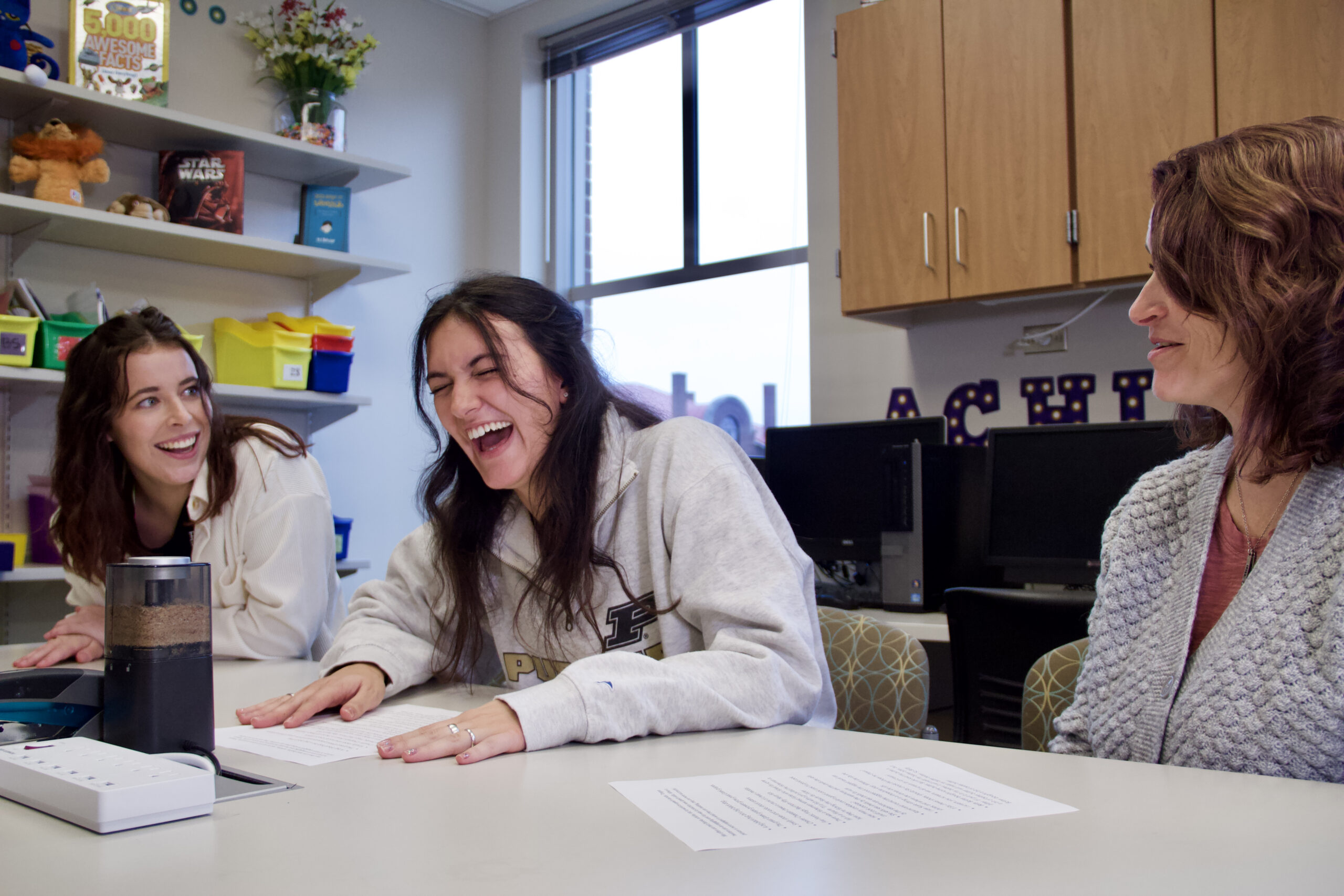Purdue speech-language pathologists utilize tongue twisters for young patients’ therapies

Speech-language pathology graduate students Halle Shoults and Madelynn Parrott, left and center, and Clinical Associate Professor Tamar Greenwell practice tongue twisters in Greenwell’s lab. The clinicians use tongue twisters in school-age children’s speech-error therapies. The young clients are more engaged when trying tongue twisters, Greenwell said. Tim Brouk
Written by: Tim Brouk, tbrouk@purdue.edu
It’s a question that has plagued English speakers for many decades: “How much wood would a woodchuck chuck if a woodchuck could chuck wood?”
On this International Tongue Twister Day (Nov. 13), it’s also a question that is utilized in Tamar Greenwell’s speech clinic and lab within Purdue University’s Department of Speech, Language, and Hearing Sciences. Greenwell and her graduate students work primarily with school-age children to improve their young clients’ speech-sound disorders or speech errors in their conversational speech. Most common errors are W for R, W for L, T for K, D for G, and S for Sh sounds.
To help with this, Greenwell, a College of Health and Human Sciences clinical associate professor, has a long list of tongue twisters to help work through those trouble sounds. The tongue twisters are implemented after the speech errors are worked on in isolated exercises and then at the word level.
“Tongue twisters are an engaging way to work with children on practicing their speech sounds in a more fun context,” Greenwell said. “We know children that are more engaged are going to practice their speech sounds a little more and be more successful.”
Greenwell and her students must master the tongue twisters themselves, of course. Just like in their therapies with their young patients, it’s all about pace, repetition and finding a rhythm.
“When we’re choosing a specific tongue twister to work on, we would be looking at what is the repeated piece within the tongue twister and if that is a target for the child that would be using it,” Greenwell said. “In order to be successful improving your speech, you have to be able to produce the target sound; you have to be able to hear your own error and switch your error for the target sound.
“Tongue twisters bridge from sentences to longer pieces of text and conversation. We’re aiming to get accuracy across all speech sounds.”
Greenwell’s lab is full of colorful books and posters aimed at helping children’s speech. However, the tongue twister part of sessions is one of her students’ favorites, even if they must work on the twisters themselves.
“I think tongue twisters are pretty difficult, but they’re also very engaging,” said Brielle Dazey, one of Greenwell’s speech-language pathology graduate students. “Using it in therapy could get kids or whoever you’re working with more engaged and enjoy what we’re talking about.”
Graduate student Halle Shoults enjoyed tongue twisters as a child, and she acknowledged it’s interesting to have to use them for her work with her clients.
“When I was younger, I didn’t at the time think about my speech sounds, trying to say them,” Shoults said. “But now that I’m in this major, it really makes sense. It slows you down, makes you think about the sounds you’re producing.”
Child speech-language diagnostic treatment is one of several community resources offered through the College of Health and Human Sciences.